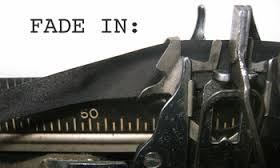Despite modern medicine’s infatuation with high-tech gadgetry, the single most powerful diagnostic tool is the doctor-patient conversation, which can uncover the lion’s share of illnesses. However, what patients say and what doctors hear are often two vastly different things.
Patients, anxious to convey their symptoms, feel an urgency to “make their case” to their doctors. Doctors, under pressure to be efficient, multitask while patients speak and often miss the key elements. Add in stereotypes, unconscious bias, conflicting agendas, and the fear of lawsuits and the risk of misdiagnosis and medical errors multiplies dangerously.
Though the gulf between what patients say and what doctors hear is often wide, Dr. Danielle Ofri proves that it doesn’t have to be. Through the powerfully resonant human stories that Ofri is celebrated for, she explores the high-stakes world of doctor-patient communication that we all must navigate. Reporting on the latest research studies and interviewing scholars, doctors, and patients, Ofri reveals how better communication can lead to better health for all of us.
Review:
I’m a Japanese⇔English medical interpreter so when I saw the title of Ofri’s latest book I cheered. Doctor-patient communication – she’s talking about my life!
Medical conversations are examined from all sides. Is it better to let a complaining patient get their whole litany out at once, or should each point be addressed as it comes up? Can the placebo affect be utilized in conversation? How can stereotypes be overcome? Is it ever okay to lie to a patient?
Each topic is covered with both anecdotes based on Ofri’s patients (vignettes!) and research studies. All kinds of strategies to improve communication are covered, from how to listen actively to when disclosing personal details is a good idea. I especially like how the studies are dissected journal club style, with weaknesses pointed out along with the strengths. For example, one study found that doctors that scored low on an empathy test had patients with worse outcomes, but:
Maybe the low-empathy doctors had dismal hygiene and the resulting BO was too distracting for the patients to pay attention to their diabetes. Maybe the offices of the high-empathy doctors offered cloth gowns rather than paper gowns, so their patients weren’t experiencing frostbite and thus better able to hear what the doctor was saying. You never know what the confounding factors might be…
As an interpreter I enjoyed the stories and insight but didn’t come away with many pearls I can use myself. It’s part of the job – I speak other people’s words and can’t outright change the direction of the conversation. I did pick up some tips, though, particularly how using different wording can change how information is received.
What Patients Say, What Doctors Hear is a trove of information for healthcare professionals, who can expect to learn practice-changing pearls, and frequent patients will appreciate the peek into their doctor’s head. If you are not one of those two groups, though, you may want to start with a different Ofri book.
Thanks to Beacon Press and Edelweiss for providing a review copy.
Advertisements Share this:- More






